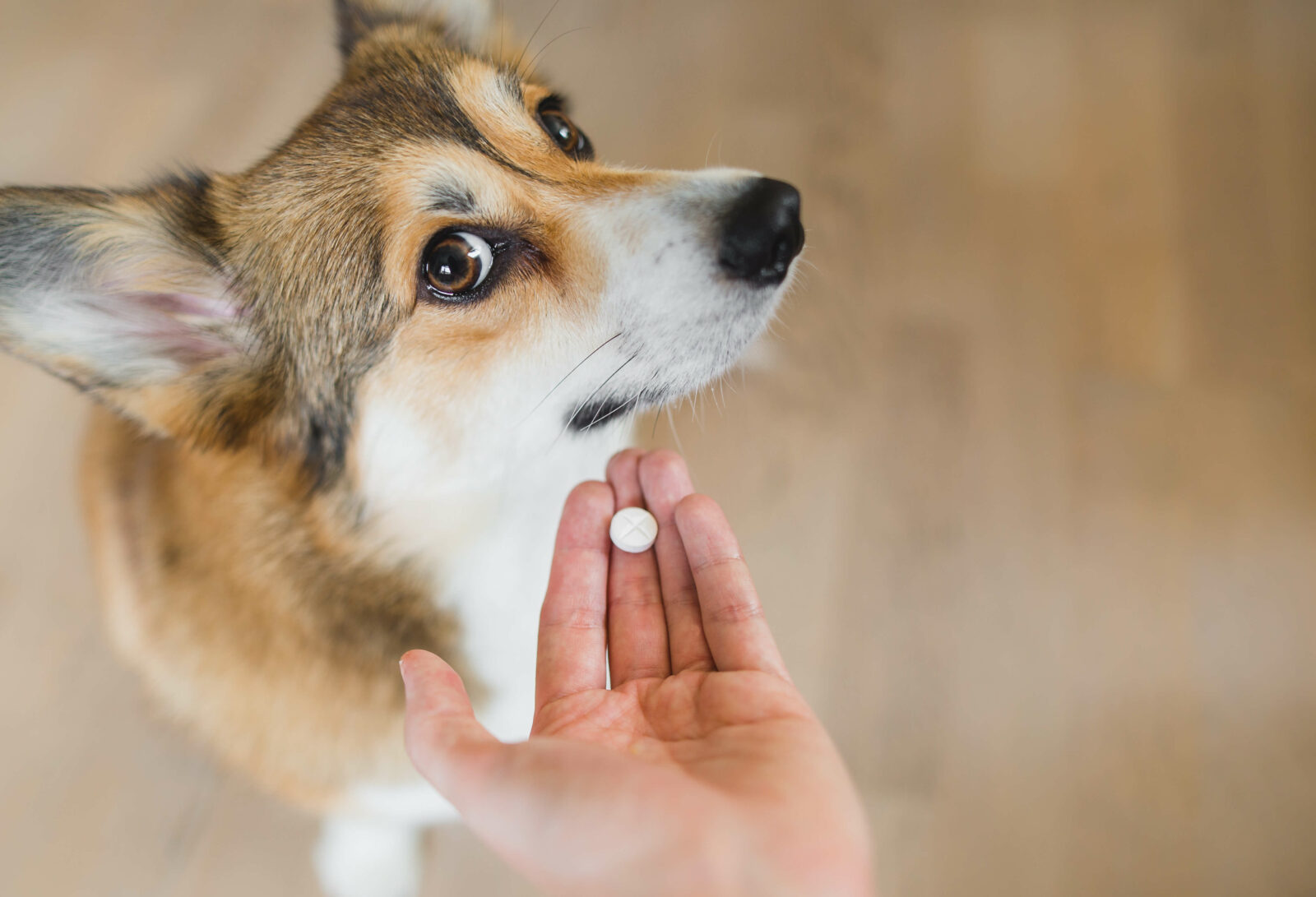Blog, General dog nutrition
How to give your dog a pill
Even if your dog is healthy, keeping them that way may occasionally require medication in the form of pills. Since we can’t reason with our dogs and convince them that the pill is for their own good, how do we ensure they take their pills without spitting them out?
There is no one-size-fits-all solution for giving pills. To help you find the most effective method for your dog, I’ve compiled a variety of tips, tricks, and techniques. Hopefully, one or more of these methods will work for your dog and make pill-giving a much easier job.
Hide the pill in food
This one is straightforward. Simply hide the medicine in food your dog loves. Depending on the pill’s size, you may need to halve it and disguise each half. Ensure the pill is fully encapsulated within the food so your dog can’t see or smell it.
If you have to give multiple medications, you can add several smaller pills into an empty gelatin capsule. This way, you only have to give your dog one capsule instead of multiple individual pills. Gelatin capsules also work great for pills that are bitter.
If you are able to crush your dog’s medication, you can buy special pill crushers to make it easier.
Please keep in mind that some medications shouldn’t be broken or given with food. So, check with your vet first.
Here are some ideas of foods that are particularly good for hiding pills, and are often favoured by most dogs:
- Home-cooked meat such as chicken, fish, or meatballs
- Foods with a creamy texture, such as peanut butter (without xylitol), soft cheese, and whipped cream.
- Canned dog food
- Soft fruits and vegetables such as banana, melon, pumpkin and mashed potato (Avoid grapes and raisins as they are toxic to dogs)
Pill pockets
Pill pockets can work great because they are hollow treats available in different flavours, designed to be filled with a pill and then sealed. You can easily find these in stores or online.
If you have a large dog, you might not necessarily need pill pockets labelled specifically for large breeds; they only need to be large enough to conceal a pill. You can even consider pill pockets intended for cats.
“Fake” pilling: the dirty trick for sneaky dogs
Once you’ve found a suitable food, hide the pill inside, but also prepare additional treats of the same food that are pill-free. Start by giving your dog a pill-free treat, follow with another, then the treat with the pill inside, and finish with one more pill-free treat.
It’s a good idea to vary the number of treats you use in each fake-pilling session, as well as the order in which you give the treat containing the pill. This prevents your dog from predicting which treat to avoid.
This trick works better if you can make it into a game and feed the treats quickly, one after the other; that way, your dog has less time to become suspicious and won’t realise that one of the treats has something extra inside.
Dogs with medical conditions
If your dog has underlying health issues, it’s important to ensure that the food you use agrees with your dog’s medical needs.
For example, if your dog is on a low-sodium diet, it’s best to avoid high-sodium foods such as processed meats and some cheeses. If your dog is prone to calcium oxalate stones, you should avoid foods high in oxalates, such as sweet potatoes. It’s important to consider other health concerns as well, as they may also require specific dietary needs.
This issue is less of a concern with balanced, home-cooked diets specifically formulated for a disease. These diets tend to have lower and more controlled amounts of the nutrients of concern. If in doubt, talk to your vet or a nutritional adviser for specific recommendations that meet your dog’s dietary needs.
Non-food suggestion for giving medication
I will be honest and say this isn’t my preferred method, but sometimes it’s the only option.
In short, this method involves placing the medication directly into your dog’s mouth at the back of the throat without using foods. If the pill isn’t coated, you can moisten it with butter or a bit of coconut oil for easier swallowing.
I’ll summarise below, but it’s important you get hands-on training from your veterinarian for a quick, stress-free and safe approach.
- Open your dog’s mouth. The easiest way to do this is to push your dog’s lips back, put your fingers just behind the canine tooth and put the nose straight up in the air.
- Push or drop the pill as far back in the throat as possible.
- Next, you will want to shut the mouth and gently stroke the neck to help the pill go down.
- Immediately follow with a tasty treat to encourage your dog to swallow.
What if none of this works?
If you struggle to get your dog to take medication, it’s essential to contact your vet for advice. Giving pills to your dog can be frustrating for both of you, and there may be alternative forms that are easier to give than tablets. So, be sure to check with your vet.


